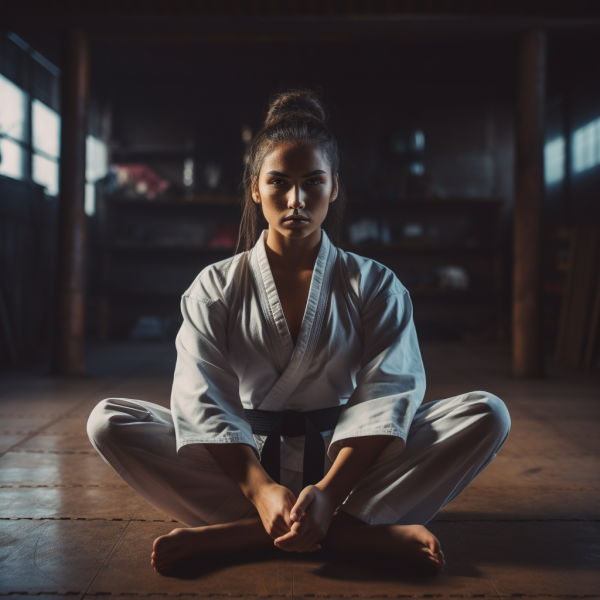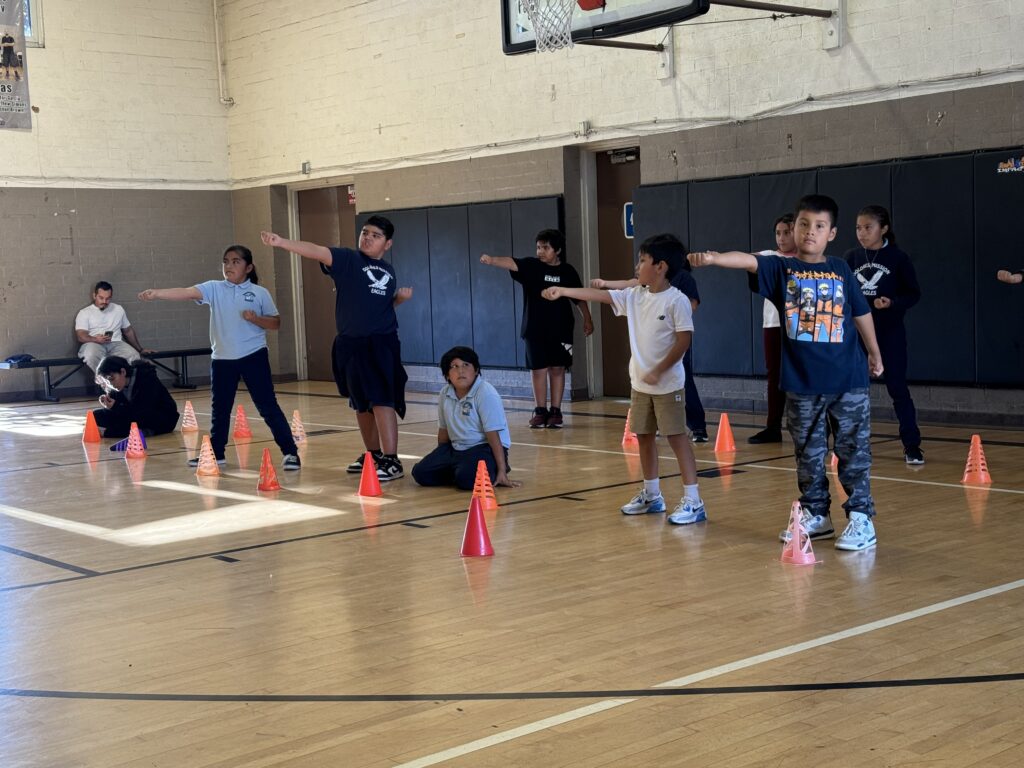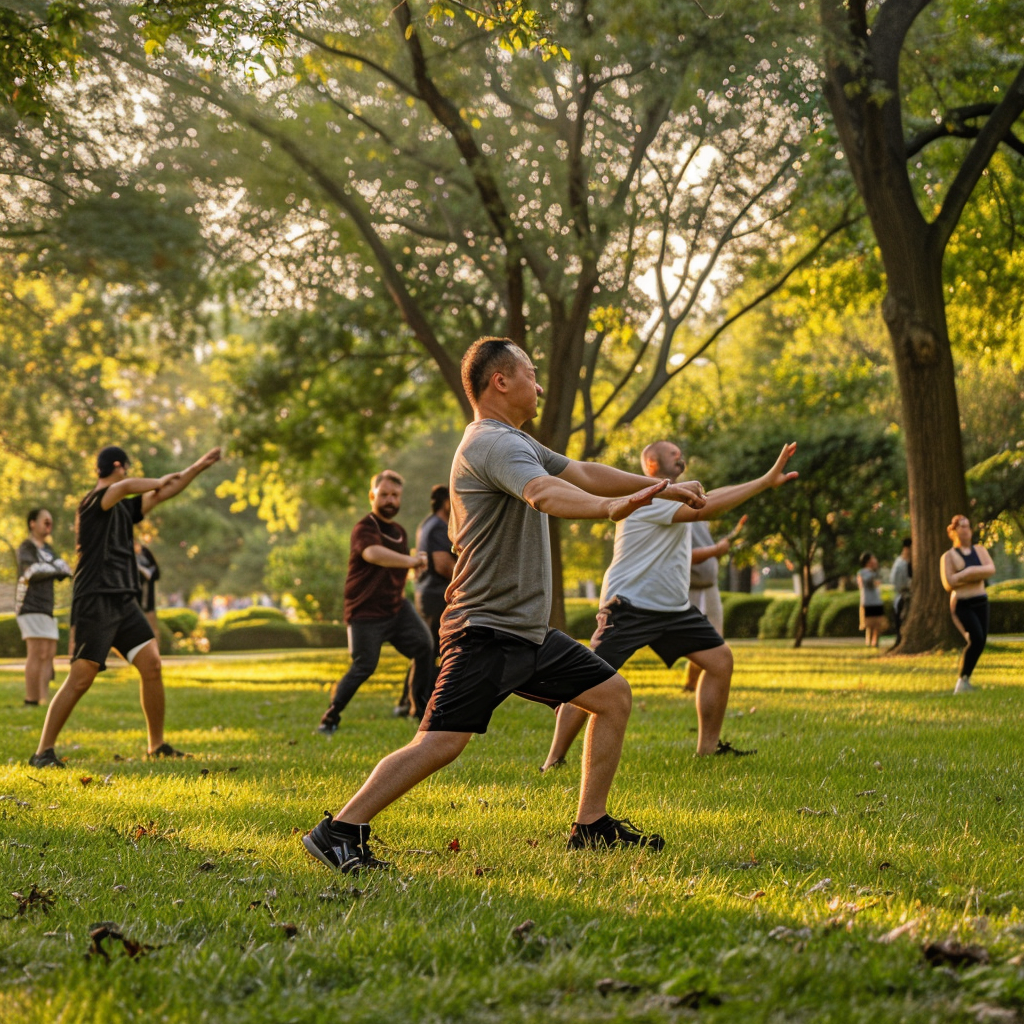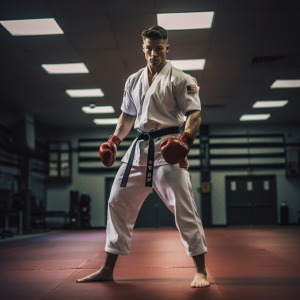 In the realm of martial arts, where bold self-defense and discipline meets quiet precision and graceful technique, lies a pursuit that extends far beyond strikes and kicks.
In the realm of martial arts, where bold self-defense and discipline meets quiet precision and graceful technique, lies a pursuit that extends far beyond strikes and kicks.
It’s a journey of self-discovery, a test of physical and mental limits, and a continuous quest for improvement.
Just as a sword is perfected and sharpened through fire and steel, a martial artist hones their skills through a multifaceted approach that reaches beyond the traditional training routines.
Welcome to the world of cross training in martial arts – a place where diversity isn’t just a choice; it’s a necessity.
In this exploration, we’ll discuss the intricacies of cross training – a practice that goes beyond traditional martial arts workouts. While continuous improvement of the techniques inherent to your chosen discipline is undoubtedly crucial, the path to excellence is illuminated by the incorporation of various training modalities.
From the heart pounding force that cardio extends to the serene stretches that enhance flexibility and agility, and from the pull of resistance bands to the incorporation of strength using dumbbells in forms – cross training opens doors to unparalleled growth and refinement.
Join us as we embark on a journey that breaks down the barriers of conventional training, revealing the science-backed wisdom behind integrating cardio, flexibility, and other innovative tools into your martial arts regimen. Whether you’re a seasoned martial artist seeking a fresh perspective or a newcomer eager to grasp the full spectrum of martial prowess, this exploration into the art of cross training promises insights that will reshape the way you approach your training.
Benefits of Cardio/Strength Training in Martial Arts
While it may seem obvious that it’s important to have a strong cardiovascular system while practicing martial arts in addition to maintaining strength, we put together a short list explaining a bit more about why:
- Endurance in Battle: Martial arts, whether on the mat, or in self-defense scenarios, demands unwavering stamina. A strong cardiovascular system allows practitioners to maintain high-intensity movements for extended periods, preventing fatigue from compromising their performance. This endurance is what allows a martial artist to execute techniques with precision, make swift decisions under pressure, and perhaps most importantly, outlast opponents.
- Energy Efficiency: Efficient oxygen delivery is a cornerstone of cardiovascular fitness. Improved circulation means muscles receive oxygen and nutrients more effectively, resulting in reduced fatigue and enhanced energy conservation during training and combat. This efficiency translates to better reaction times, heightened focus, and prolonged staying power.
- Quicker Recovery: Intense martial arts training can push the body to its limits, leading to muscle fatigue and delayed recovery. A robust cardiovascular system aids in quicker recovery by facilitating the removal of waste products and promoting nutrient delivery to muscles. This means less downtime between training sessions and a decreased risk of overexertion injuries.
- Power Amplification: While technique is paramount, a solid foundation of muscular strength complements technique execution. Strength provides the necessary power behind strikes, throws, and defensive maneuvers. A strong body not only infuses movements with more force but also minimizes vulnerability when absorbing impact from opponents.
In addition, it’s important to note that because martial arts training usually involves intensive aerobic (with oxygen, using stored fats for energy) and anaerobic (without oxygen, using muscle glycogen as fuel) exercises, every martial artist should incorporate cardio and strength workouts that go beyond the usual routines (Evolve Daily, 2023).
Benefits of Flexibility/Agility Training in Martial Arts
Incorporating flexibility and agility training into your martial arts regimen brings forth a myriad of benefits that enhance both your techniques and overall performance. Let’s discuss some of these advantages:
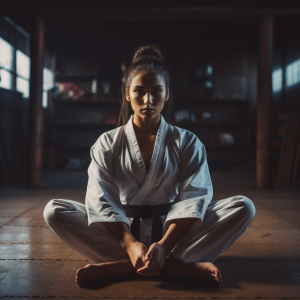
- Enhanced Range of Motion: Flexibility training increases the range through which your joints can move, enabling you to execute techniques with greater precision and effectiveness. This expanded range of motion translates to better kicks, deeper stances, and smoother transitions, giving you a distinct edge in combat situations.
- Injury Prevention: Supple muscles and flexible joints are less prone to injury. Proper flexibility training helps prevent strains, sprains, and muscle pulls that could sideline your training progress. Additionally, a flexible body can absorb impact more effectively, reducing the risk of injuries during sparring or practice.
- Quicker Recovery: Flexibility exercises improve blood circulation and promote the delivery of nutrients to muscles and connective tissues (just like we discussed previously with cardio/strength training). This accelerated healing process ensures that you bounce back faster after rigorous training sessions, reducing downtime due to soreness or overexertion.
- Agile Footwork: Agility training enhances your footwork by developing fast, precise, and coordinated movements. This agility translates into quicker lateral and forward-backward movements, allowing you to evade opponents’ attacks and find optimal positions for counterattacks.
- Rapid Reflexes/Transitions: Agility training sharpens your reflexes, enabling you to react swiftly to opponents’ actions. Quick directional changes and sudden shifts in body positioning become second nature, helping you anticipate and counter movements effectively.
- Enhanced Spatial Awareness: Flexibility and agility exercises demand heightened spatial awareness. This awareness extends beyond your own body, making you more adept at reading opponents’ movements and adapting to dynamic combat scenarios.
Agility and flexibility are a perfect counterpart to a strong cardio system and strength maintenance program for any martial artist. These physical fitness aspects complement one another and work together, as we demonstrate in our innovative Coordinative Fitness Pyramid.
Check our coordinative fitness pyramid out HERE!
So, How Can I Incorporate Cross Training into My Routine?
The most effective and efficient way to see the benefits of each of these physical fitness pieces is to utilize the concept of cross training.
Cross training is defined as the action of engaging in two or more types of sports or exercises to improve fitness or performance. Knowing that you probably already have an existing fitness/practice routine in place for martial arts, here are some ideas that will add strength training, cardio, flexibility, and agility training to your workout:
- Add lightweight dumbbells to your forms practice. Hold one in each hand as you go through your form. Also consider weighted wrist wraps or weighted ankle wraps. This will increase your strength in your arms/legs.
- Try resistance bands when working your basics (kicking and striking drills). Utilize different strength bands (thicker bands provide more resistance). Try different speeds with these bands and see how much more difficult it is!
- Plyometrics are a great way to get out of the “normal exercise routine” and get back to body weight basics. Be careful, as many plyometric exercises can be above a beginner’s range. They are great though as they don’t require a gym or any type of equipment and can be done anywhere while working multiple muscle systems.
- Try bouncing back and forth between your normal martial arts practice and working out. For example, do martial arts drills for ten minutes and then run around the block. Another ten minutes of drills, then do high knees for 30 seconds. Five minutes of drills, then 2 minutes of sit-ups. Keep switching it up to give your body a new routine.
 The idea is to mix it up. The concept of cross training is to utilize different forms of exercise – not to remain stagnant – and ensure that all your muscle groups are working.
The idea is to mix it up. The concept of cross training is to utilize different forms of exercise – not to remain stagnant – and ensure that all your muscle groups are working.
Whether you’re working drills, swimming, or hiking the important thing is that you keep moving.
—————————————————————————————————————————
As you take these insights and begin your own cross training journey, remember that the art of martial arts is not static; it’s a living, breathing entity that changes with you. It never ends, it only evolves.
Embrace diversity and harness the power of cross training and sculpt your own path that defies convention and redefines possibility. Your martial arts fitness journey is only beginning, and the fusion of cardio, strength, flexibility, and agility will be your guiding light on your way to a picture of full coordinative fitness.
References
Evolve Daily. (2023). 6 Ways to Boost Your Cardio for Martial Arts. Retrieved from https://evolve-mma.com/blog/6-ways-boost-cardio-martial-arts/
